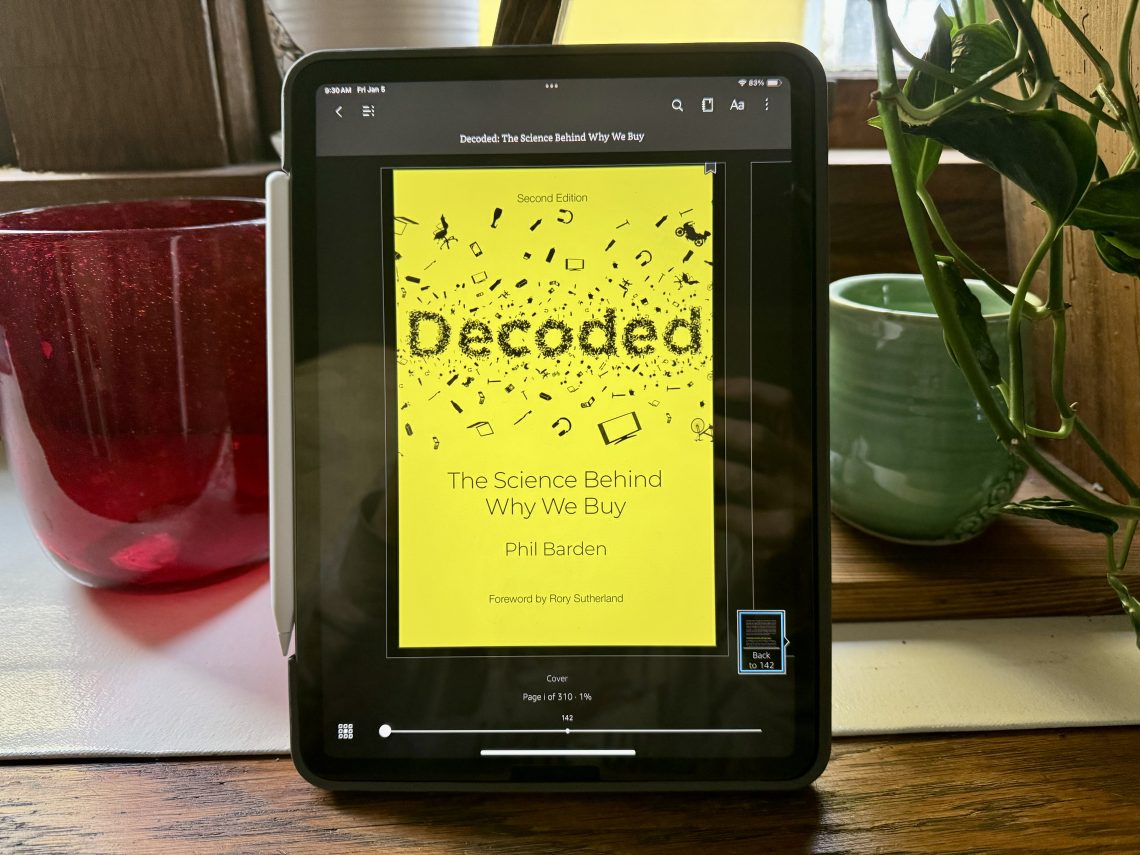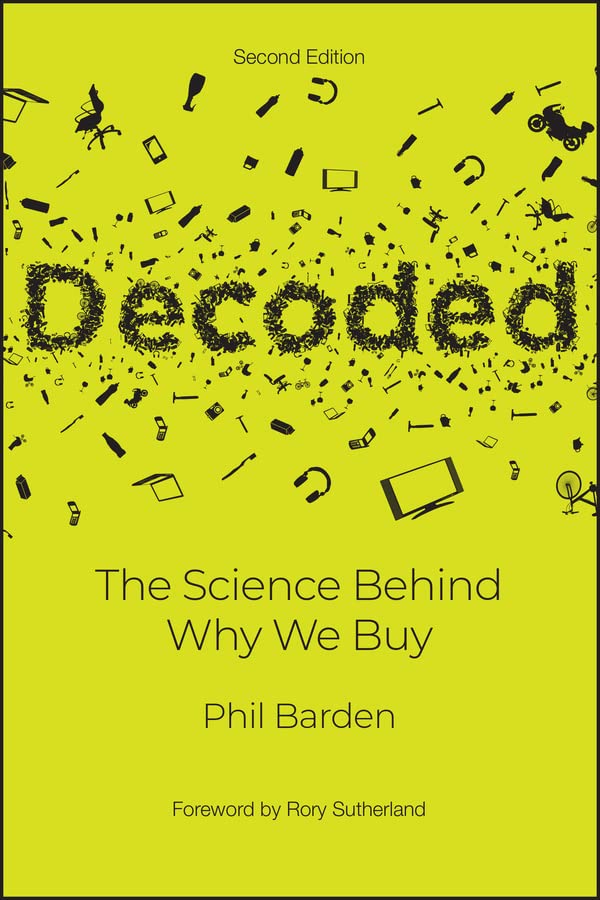Like most good marketing books, Phil Barden’s “Decoded: The Science Behind Why We Buy” is part marketing technique, and part study in human psychology. Barden’s book is maybe a little more psychology than most.
For those who don’t know who Phil Barden is, he is not only an author, but also the MD for Decode Marketing. He’s had over 25 years experience working with marketing clients and has studied “decision science” for over a decade. He started his career doing client work for companies such as T-Mobile, Unilever and Diageo, before meeting with Decode Marketing. The concepts that the Decode Marketing team showed to him changed his perspective on marketing tactics, so he joined forces with them to continue learning about Decision Science and how it applies to marketing.
What is “Decision Science”?
Decision Science is a catch all phrases that employs the diverse fields of neuroscience (neuromarketing), cognitive and social psychology, and behavioral economics to predict, and attempt to persuade human behavior and decision making.
Barden’s goal when writing this book was to distill the information that he learned from his colleagues at Decode Marketing down to practical advice that could be put into laymen’s terms. In this manner he is able to bring all this expertise to marketers that haven’t had the ability to do a deep study in any of the Decision Science fields.
What I find interesting about this book, and marketing in general, is what we can learn about ourselves from studying the science behind what drives us to make decisions.
What lessons does the book teach?
Barden’s goal in the book is to combine practical tactics with theoretical principles. He attempts to educate the reader with the theory behind why people buy, and then shows real world examples of how those principles can be used. And he does so very effectively.
So why do we make purchase decisions? What compels us to be attracted to one brand over another?
Barden claims that many of our decisions are made in our “System 1” consciousness, which is really not consciousness, but rather it’s the implicit decision making system that is in the sub-conscious. It as an automatic, pre-conscious level of thinking that controls the majority of our decision making.
System 1 is informed by things like the person’s natural inclinations and the context in which the person find their self (think country, city, social circle). Brands can take advantage of this subconscious level of decision making by building a brand identity that someone can relate to. They do this by appealing to the sort of jobs that the System 1 consciousness is responsible for. “What does a product say about me as a person?” or “How does this product make me feel?” or “What does this product say about my place in the world?”
Some examples of System 1 thinking he refers to in the book include how we are able to recognize brands from our periphery. He shows blurred images of products, and how they’re recognizable even in their blurred state, and discusses the consequences of changing the branding too drastically from what can be peripherally observed.
He also talks about principles such as the scarcity principle, which can trigger buying decisions on people’s “fear of missing out”, and the certainty principle which trigger buying decisions based on the certainty of a price when paying (think about tipping at a restaurant, it’s easier to just push the 20/25/30% button than to calculate a tip on a receipt. This can lead to larger tips).
There are many, many more lessons and examples in the book, but I”ll stop here. The real point of my interest in this book, and sharing with you is the psychological components.
Conclusion
I’m not a marketer (unless you consider this blog marketing), but I am interested in human psychology, and I think there is a lot of value to reading books on marketing to see what makes us tick. Marketers spend a lot of time trying to understand human behavior, and we can learn a lot about ourselves, our impulses, how we see ourselves in this world by studying what they study. Phil Barden’s “Decoded: The Science Behind Why We Buy” is a rare treat, a great balance of intellectual exploration and practical application. It’s worth a read even if you are not in the field of marketing.







Comments by The Dapper Savage